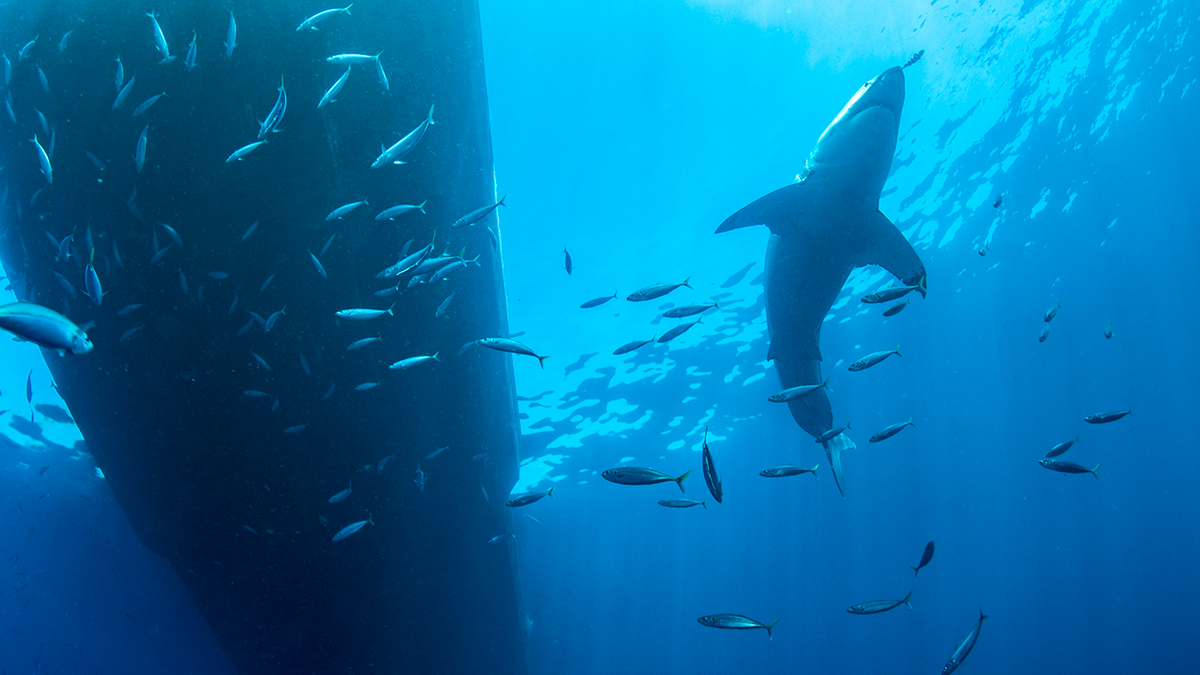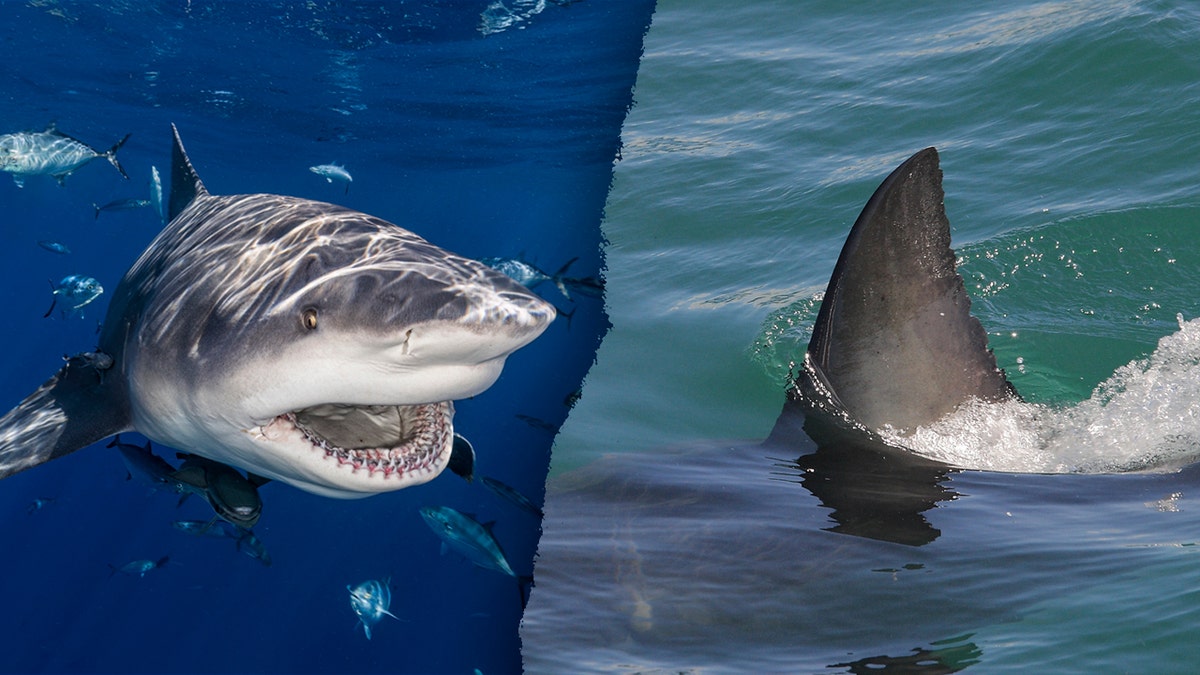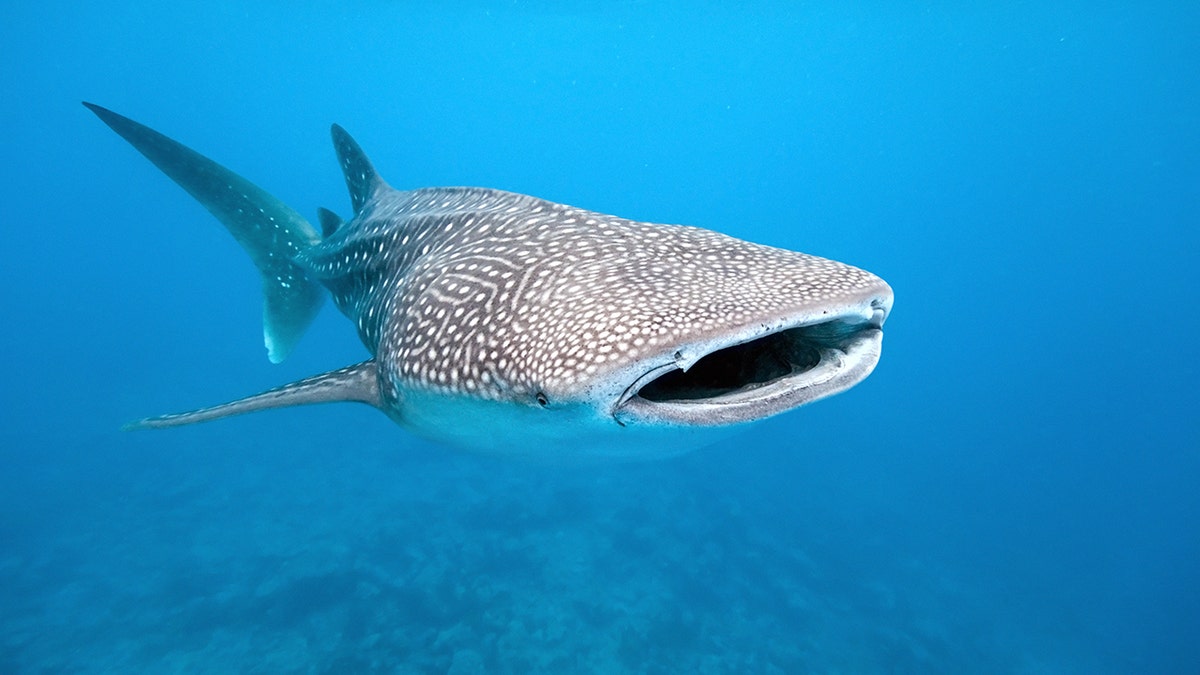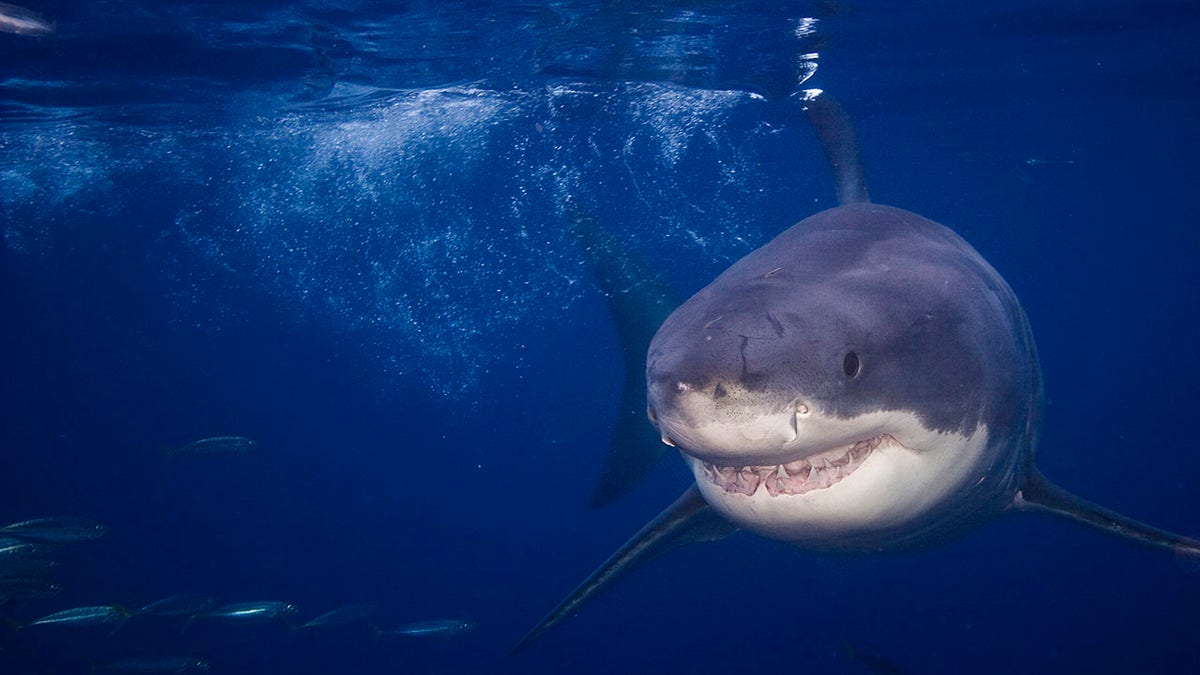Woman conquers fear of sharks by swimming with over 20 of them
Muthi Annuriy is a 29-year-old from Indonesia who recently conquered her fear of sharks by swimming with over 20 of them. See the unforgettable moment!
Shark sightings on the east and west coasts have been on the rise as Americans flock to beaches in hopes of cooling off.
In Hawaii, a tiger shark was recently spotted swimming 30 yards from the island's break wall along Oahu's South Shore, prompting warning signs to be posted by officials, Island News reported.
The Honolulu Emergency Services Department labeled the 12-foot shark "non-aggressive" after it was spotted around noon on June 27.
TIGER SHARK SPOTTED OFF HAWAIIAN COAST PROMPTS WARNING SIGNS ON BEACH
Below, take a look at 12 unique facts about sharks, including the population, size and more, as some U.S. states see a spike in shark sightings and warnings of potential shark attacks.

Sharks are considered to be long-bodied marine fish with a cartilaginous skeleton and a prominent dorsal fin. (iStock)
1. How many species of sharks are in existence?
There are more than 500 known species of shark in seas around the world, according to the Smithsonian National Museum of Natural History.
2. World shark population
Marine experts estimate that the total shark population is around one billion, according to A-Z Animals, an online animal encyclopedia.
"This means there's a shark for every seven or eight humans," the encyclopedia noted in July 2022. "They can be found in every ocean in the world and just about every oceanic habitat, including the open ocean, deep sea, coral reefs, shallows and beneath Arctic ice."
AT THE BEACH FOR JULY 4 WEEKEND? 7 SHARK SAFETY TIPS THAT COULD SAVE YOUR LIFE

See more facts below about the fish species, circumstances of attacks, how many teeth shark have and more. (iStock)
3. Largest living shark species
Whale sharks are the largest living shark species. The maximum size of whale sharks is not known, but could be as large as 65.6 feet, according to the World Wildlife Foundation.

Whale sharks can be found in warm coastal waters around the world. (iStock)
The world’s largest whale shark on record measured 61.7 feet, according to a 2018 study from Nova Southeastern University’s Guy Harvey Research Institute – a university in Florida – and the Maldives Whale Shark Research Program.
4. Smallest living shark species
Dwarf lantern sharks are the smallest living shark species with an average size of 8 inches, according to the National Museum of Natural History.
The museum said the species is "smaller than a human hand" and has "only been observed a few times" in the northern part of South America at depths between 928 and 1,440 feet.
OHIO TOURIST BITTEN BY SHARK AT FLORIDA BEACH WHILE PLAYING FOOTBALL IN KNEE-DEEP WATER
5. How powerful are the jaws of a shark?
Great white sharks have one of the strongest bites in the world. A 2008 experiment led by Australian paleontologist Stephen Wroe found that a 7,328-pound great white shark could exert about 4,095 pounds of force from its powerful jaws, according to a study published in the Journal of Zoology.

Great white sharks can be found in almost all coastal and offshore waters around the world. (iStock)
6. How many teeth do sharks have?
Most shark species have five rows of teeth, according to Delta Dental of Washington, a dental insurance provider.
In a Shark Week blog post, Delta Dental of Washington reported that some shark species "can have as many as 3,000 teeth at once" and "lose up to 100 per day."
7. How many shark attacks have occurred in the last year?
In 2023, there were a total of 69 unprovoked shark attacks worldwide, according to the Florida Museum of Natural History.
Surfers and those participating in board sports accounted for 42% of incidents. Swimmers and waders accounted for 39%. Snorkelers/free divers accounted for 13%.
SHARKS SEEN DARTING ALONG TEXAS BEACH PRIOR TO SUCCESSIVE BITES

Warning signs for great white shark biting incidents were placed on Newcomb Hollow Beach in Cape Cod, Massachusetts, in 2021. (Lindsey Nicholson/Universal Images Group via Getty Images | iStock)
8. How many shark attacks have occurred in the last five years?
From 2018-2022, the average number of unprovoked shark attacks on humans was 63, per the Florida Museum of Natural History.
9. What are the chances of dying in a shark attack?
The chance of being killed by a shark is one in 3.7 million, according to National Geographic.
For more Lifestyle articles, visit www.foxnews/lifestyle
10. How many sharks are killed each year?
The latest research suggests that around 100 million sharks may be killed annually, often targeted for their fins. This practice affects many different shark species, including whale sharks, according to the World Wildlife Foundation.

There are hundreds of known shark species. (iStock)
11. How long have sharks existed?
Sharks have existed for 450 million years, according to The Natural History Museum, London.
The museum said the finned animal appeared in fossil records before the existence of trees, and sharks have survived five mass extinctions.
CLICK HERE TO SIGN UP FOR OUR LIFESTYLE NEWSLETTER
12. What was the largest shark species in the world?
The since extinct megalodon is believed to be the largest shark species in world history. A 1909 jaw reconstruction put together by American paleontologist Bashford Dean estimated that megalodons could grow to be 98 feet long, according to Fossil Era, a fossil specimen provider.

In this March 16, 2011, photo, Children look at the jaw of a megalodon, a prehistoric shark, at the Museum of Nature and Science in Dallas on March 16, 2011. The jaw is 11 feet wide and almost 9 feet tall, it consists of 182 teeth collected from South Carolina rivers. (AP Photo/Rich Matthews)
In recent years, scientists have downgraded Dean’s estimate to 68.6 feet. Full skeletons have yet to be found, but megalodon teeth are often found around the world.
CLICK HERE TO GET THE FOX NEWS APP
Megalodons \became extinct 2.6 million years ago during the end of the Pliocene era, according to The Natural History Museum, London.



